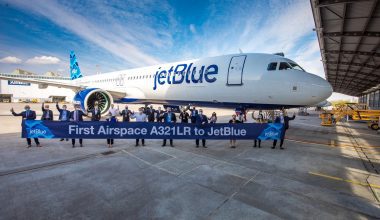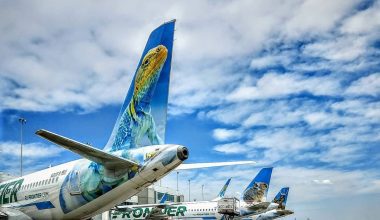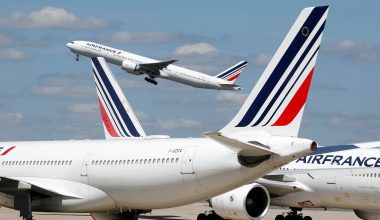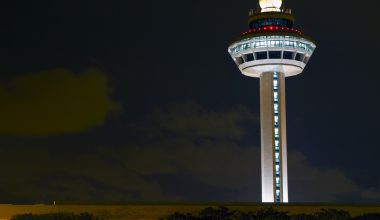More than three decades have passed since the low-cost pioneer Pacific Southwest Airlines (PSA) ceased its operations with a full merger into USAir (later US Airways). In 1988, Pacific Southwest Airlines (PSA) was fully integrated into USAir following the $400 million cash transaction. The ownership transfer of PSA over to USAir marked the end of an era of the world’s first discount airline. The two horrific PSA accidents, carriers emerging from airline deregulation, and other industry giants contributed directly/indirectly to PSA’s merger.
Deemed one of the unique airlines of all time, PSA introduced plenty of ‘firsts’ that changed the airline industry. It was a trendsetter that left an inedible market on air travel, including low fares, direct marketing to passengers, etc. Despite the demise of Pacific Southwest Airlines, it still holds a place in US aviation history as an innovative regional carrier. Why is PSA a highly regarded airline brand in the US? How did PSA leave a lasting imprint on the aviation landscape?

1. Pioneer of low-cost travel
Although PSA no longer graces the skies, its low-cost business model led to a new beginning in air travel. Pacific Southwest Airlines is the pioneer of low-fare travel that helped revolutionize how people pay for travel. At the time when flying was a domain of a select few, it brought air travel to the masses. Today, the low fare is a norm, and the credit for originating the low-fare concept goes to PSA Airlines.
The low fare was the abiding hallmark of PSA, bringing air travel down to those who couldn’t afford it. While air travel was still perceived as a symbol of luxury, it offered low fares, which were affordable even for students.
Emulating the success of PSA’s low-cost strategy, Southwest Airlines launched low-cost flights in 1971. Southwest Airlines is the spiritual heir to the defunct PSA that took low-cost service to the next level and stirred up air travel within the US and beyond.
2. The unofficial flag carrier of California
PSA was the unofficial flag carrier of California for four decades as it restricted its flying horizons beyond the Californian borders. Pacific Southwest Airlines was strictly a Californian carrier with frequent flights on the route connecting Southern California to the Bay Area. Until 1978, the airline stuck to just Cali flights to avoid government-imposed prices on interstate routes. Its strategy was to evade inter-state federal regulation expenses and offer frequent service on the bread-and-butter route.
The Airline Deregulation Act in 1978 lifted federal control over fares, allowing PSA to expand out of California. After the Civil Aeronautics Board gave the nod to serve Las Vegas and Reno, PSA began its expansion spree. The flag-carrying airline of California spread its wings outside the state for the first time in 1978. Following the first interstate flight to Reno, it gradually stretched its network to include new destinations. The most notable PSA networks outside California include Las Vegas, Salt Lake City, Phoenix, Tucson, and Albuquerque.
PSA also had a brief international spell with flights to Cabo San Lucas, Mexico, in 1979. It was the first and the only international route of Pacific Southwest Airlines and was short-lived.
3. The world’s friendliest airline
Flight attendants are instrumental in enhancing the in-flight experience. One of the reasons why Pacific Southwest Airlines was so famous was their beautiful and friendly flight attendants. PSA was known for its jokey crew banter and lively corporate culture. PSA proclaimed itself as the ‘world’s friendliest airline’ with a subtle, black ‘smile’ painted on the nose of each plane. This beaming smile on distinctive orange, red, and white planes quickly became a recognizable trademark. The cheerful detail on the aircraft’s nose completed the look of colorful aircraft and grabbed people’s attention. Pacific Southwest Airlines won the hearts of West Coast people with its smiling service.
The other unique aspect was the distinctive attire of flight attendants in miniskirts and ‘banana-skin tight’ hot pants. The beautiful head-to-toe flight attendants wore scanty outfits that made the whole industry look at them with raised eyebrows. PSA dressed its flight attendants in bright-colored uniforms that nobody else had used before.
4. Innovative marketing
Pacific Southwest Airlines, the major intrastate carrier in California, mastered the art of airline marketing. In addition to low fares, and efficient and friendly service, it intrigued passengers with direct marketing. It was the king of marketing; it introduced direct marketing techniques to passengers and purchased radio stations in Sacramento, San Jose, Los Angeles, and San Diego. Under the ‘Precious Passenger Association,’ PSA provided free drinks and certificates to congenial and kind passengers.
The crew’s humor, the beaming smile on the aircraft, the eye-catching steward uniforms, and the low fares; all contributed to PSA’s innovative marketing strategy.
5. Airline of the ‘firsts.’
Throughout Pacific Southwest Airlines’ lifetime, the carrier scored its share of ‘firsts’ in US airline history. As mentioned earlier, it is the world’s first low-cost airline that allows more people to fly. The advent of low-cost flying can be attributed to PSA, which opened air travel to masses in the US.
Besides pioneering low-fare service, it was the first airline in the US to fly McDonnell Douglas Super 80. It was also the foremost major US operator to fly short-haul and regional airline British Aerospace 146. With a range of 2,909km and cruise speed of 809km/hr, the jetliner served PSA’s corridor routes. The credit for using automated ticketing machines also goes to Pacific Southwest carrier, which minimized labor costs and time consumption. Furthermore, the PSA also charted the path forward to the modern-day airline magazine by helping set up East-West Network. Jeffrey S. Buttler’s East/West Network was one of the largest media companies touting a robust network of in-flight magazines.
Despite the heart-wrenching departure of Pacific Southwest Airlines, it is still alive in the minds of aviation geeks. The low-fare leader touched the horizon of success at its peak and introduced many iconic innovations. Following USAir’s takeover of PSA, it renamed Jetstream Airlines to PSA Airlines to protect the trademark. Today, PSA Airlines is a regional subsidiary of American Airlines, operating American Eagle flights with over 130 aircraft.
Pacific Southwest Airlines flashback:
Pacific Southwest Airlines was a successful regional US airline founded in 1949 by Kenny Friedkin. Headquartered in San Diego, it was the city’s hometown airline and one of its most visible publicly held companies. The carrier spent most of its time flying within the Californian skies with hubs in Los Angeles, San Diego, and San Francisco. The $400 million takeover of PSA Airlines spelled an end to the airline’s carrier, a full stop to its 38-year history.
- A modest start in 1949
Pacific Southwest Airlines made a modest start on May 6, 1949, with a single $1000-a-month-leased Douglas DC-3. It was the brainchild of Kenny Friedkin, an American aviator and businessman who also owned commercially unsuccessful Friedkin Airlines.
Friedkin got PSA operations to a flying start with the commencement of air service on an intra-California route. Flying between Northern and Southern California, the carrier began a weekly rotation from San Diego to Oakland via Burbank.
- The 1950s: the decade of PSA growth
The 1950s was a period of growth for PSA as it made significant developments and improvements in its operations. The carrier ushered in the new decade by shifting its flights from Oakland to San Francisco. Some notable achievements in the 1950s include the newer Douglas DC-4 aircraft and the expansion of flights to San Francisco, San Jose, Ontario, etc. The carrier welcomed two 70-seater DC-4s in late 1955 to operate non-stop flights to new routes.
At the end of the 1950s, the carrier replaced DC-4s in favor of 92-seat Lockheed L-188 Electra turboprops.
- Continuous growth
By 1963, PSA had six L-188 Electras carrying the highest number of passengers on the Bay Area-Los Angeles route. Starting from a few hundred passengers, the airline quickly increased its traffic numbers to 355,000 in 1959, 1,305,000 in 1963, and 5,162,000 in 1970.
Moving full-steam ahead, the carrier added new aircraft to its fleet, including Boeing 727-114s, Boeing 727-214s, Boeing 737-214s, Douglas DC-9-30s, etc. It also expanded its limited flight network to an impressive schedule, including destinations like Arcata/ Eureka, Contra Costa County, Fresno, South Lake Tahoe, Long Beach, Monterey, Palm Springs, etc.
After 1978, PSA commenced operations in the US states of Arizona, Colorado, Hawaii, Idaho, Nevada, Oregon, Texas, Utah, and Washington. As a part of international expansion, it also served the Mexican cities of Los Cabos, Mazatlan, and Puerto Vallarta.
- PSA final fleet
At the time of PSA’s merger into USAir, the carrier had 69 aircraft consisting of British Aerospace BAe146-100A/200A, Boeing 737-200/757-200s, Douglas DC10-30, MD81s, MD82, etc.
Fatal accidents involving PSA Airlines
Two major accidents involving PSA Airlines have occurred: PSA flight 182 and Flight 1771. The mid-air collision of Boeing 727-200 with Cessna 172 during PSA Flight 182 claimed the lives of all 135 passengers. Similarly, the BAe 146, operating PSA Flight 1771 on the SFO-LOS route, crashed near Cayucos, killing 43 people aboard.






